
How to Explain the Value of SEO to Executives — Whiteboard Friday
The author's views are entirely their own (excluding the unlikely event of hypnosis) and may not always reflect the views of Moz.
Edited by Emilie Martin
In today’s episode of Whiteboard Friday, Seer Interactive’s Larry Waddell discusses how you can translate the SEO work you do for your clients into how executives think of value — specifically, business value.
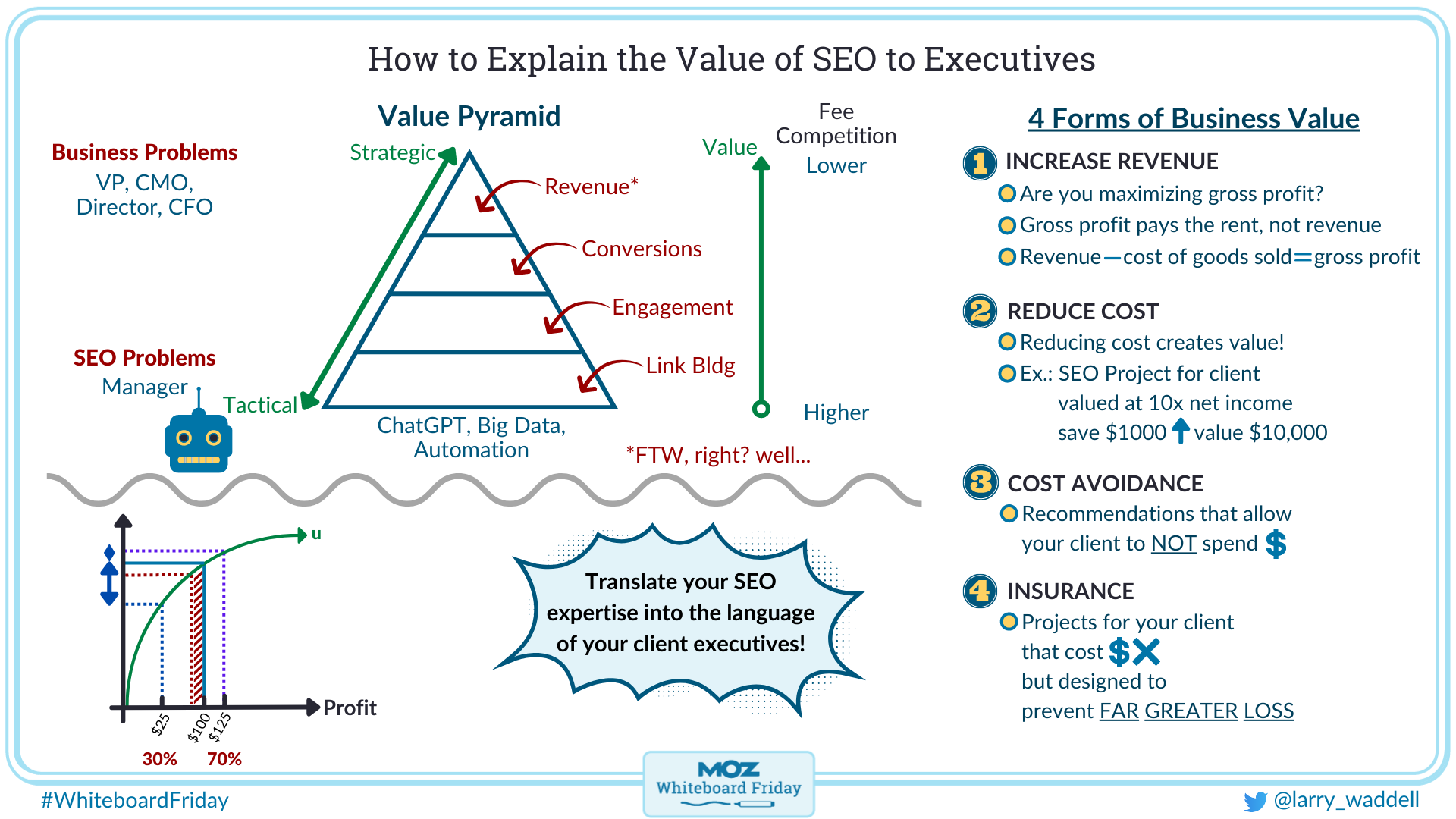
Click on the whiteboard image above to open a high resolution version in a new tab!
Video Transcription
Hello, Moz community, and welcome to another edition of Whiteboard Friday. I'm Larry Waddell, EVP of Business Strategy for Seer Interactive, and today I want to talk to you about how to translate the great work you do for your clients into how they think of value, specifically business value.
So let's jump right in. Now to do it, I'm going to review two frameworks or two ways of thinking. One is the value pyramid. That's where we're going to start. But then we're going to move from there to the four forms of business value, and I'll walk you through that.
The value pyramid
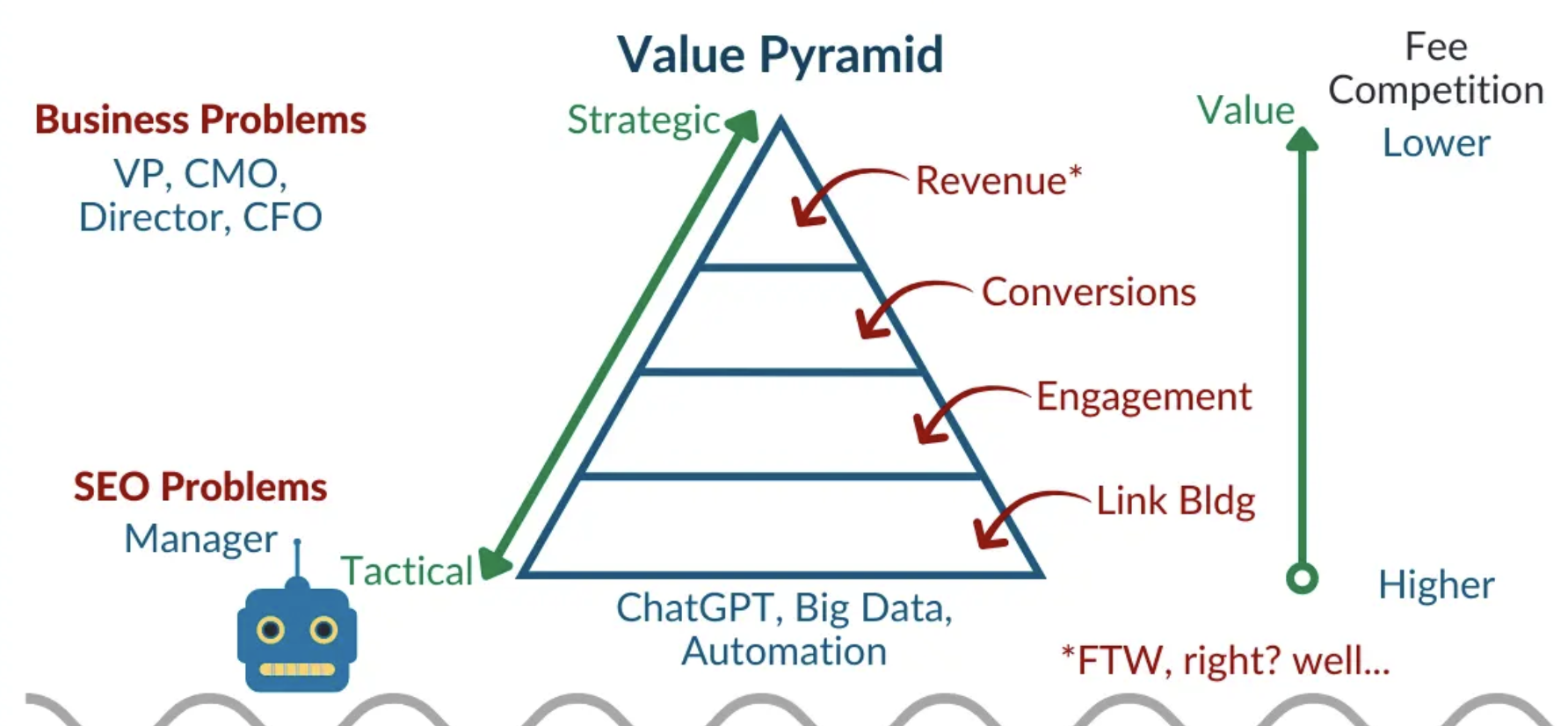
So starting with the value pyramid, and this is something I've used at Seer for years, and I've had the great privilege of leading the Analytics team at one point in time, the SEO team, thank you Wil, and the Paid Media team, thank you, Crystal, and through all of that, I've used a very simple construct. As you can see, there's nothing terribly fancy here, but it's a way to help our teams understand the work that they do and to understand the work the clients are asking us to do.
So to start, it's a pyramid like any other, four different layers, and for SEO you can think about the bottom layer as something like link building. It's something very important to do, extremely important, but perhaps at the bottom of the pyramid. Link building we get rankings. With rankings, we get traffic.
Traffic gets us engagement on the website. But we don't stop there of course. Engagement on the website and traffic, now we want to focus on conversions. Now we get those conversions and depending on what our conversion value is, that gets us to revenue. So really nothing earth-shattering there. But I want to introduce a couple other concepts. So you might want to think about titles at your clients.
The difference between the top and bottom of the pyramid
So if you're down here, perhaps at the bottom of the value pyramid, maybe it's link building, maybe it's other low-level but very important tasks, you might be dealing with somebody who's a specialist or a manager at your client day to day. As you move up this pyramid, where you're talking about things like revenue and you've been in those meetings, you've had these people join your QBRs or they pop into a weekly call or a monthly call, and they have titles like director or VP or CMO.
Every once in a while, you might get a director of finance or a CFO in those meetings. You might also have noticed that those meetings tend to be more strategic. They tend to be focusing on things other than the nitty-gritty tactical that you might be grinding out day to day with your manager at the client.
These folks are worried about business problems. They're worried about things that are impacting the trajectory of the overall business, of which SEO plays a very important part. Down here, perhaps less visibility into those things at the client, but down here we're focused more on SEO problems, rankings, how much traffic are we getting, what are our conversions, content on the site, load speeds, and those sorts of things.
Common challenges at the bottom of the pyramid
It's not that these folks, like CFOs, don't care about day to day SEO issues. They're just perhaps removed from it, and they don't necessarily understand how any of this stuff down here impacts the stuff that they care about unless we have a lot of explanation and we've all been there. So what do we do with something like this? Well, we can start to think about a hypothesis around value.
What if there's greater perceived value on the part of these folks at the client, the higher up this pyramid you happen to be? So down here, again, important but perhaps less perceived value than strategic conversations that relate to business problems at your client. So what are the things to worry about down here?
There's actually a lot to worry about down here. So in my experience, if you have engagements that tend to focus mostly on talking about, reporting on, and reviewing activity at the bottom of the value pyramid, you can get locked into just doing that for your client.
The way I like to think about it is this is the big kids table or the adults table perhaps. How do we get a seat at that table? Again, in my experience, if these folks don't see a way to translate what you do into what they care about, you kind of get relegated down here.
Again, there's nothing wrong with it. But the problem is, if we look at fee competition, it tends to be the case that there's higher fee competition down here (at the bottom of the pyramid) than there is up here (at the top.) There tends to be more competitors down here. There's less differentiation between providers down here. You're more susceptible to being ChatGPTed, for example.
You're more susceptible to getting big data out or automated out. You've seen some nibbling around the edges around things that you might characterize as tactical. More and more of it is becoming automated or good enough automation. Maybe it's not perfect, but it's good enough. Then I can save some money because down here there's high fee competition.
Moving up the value pyramid
You can see the robot here coming to get us. So the thing that we need to do is think about how we move up this pyramid, both in the work that we do and how we talk about the work that we do with clients. So, again, that's moving up the value pyramid and tying more of our work to the business problems that these folks, VPs, CMOs, directors, CFOs care about.
Another way to think about this too is career progression. So if you start off in SEO, you might start down here. You might start doing content audits, and you might start doing link building and things like that. Again, very important things to do. But then over time, this also creates a path for you to sort of think about where you can go as you start to unpack a little bit more of how progressively more sophisticated work you can be doing for clients translates to value for these people, because it turns out these people control the budget.
So you might also have discovered that when it's time for renewals or pitching work, that oftentimes there's a big boss and that big boss sits up here, typically not down there. So that gets us to value. Now, when we think about conversions and we're thinking about revenue generated from our work on a client website, we tend to focus on the revenue of that, and revenue is extremely important.
We can't get anywhere if we're not generating revenue or more revenue for our clients. So revenue for the win. You can see it right there. Well, yes and no.
Four types of business value
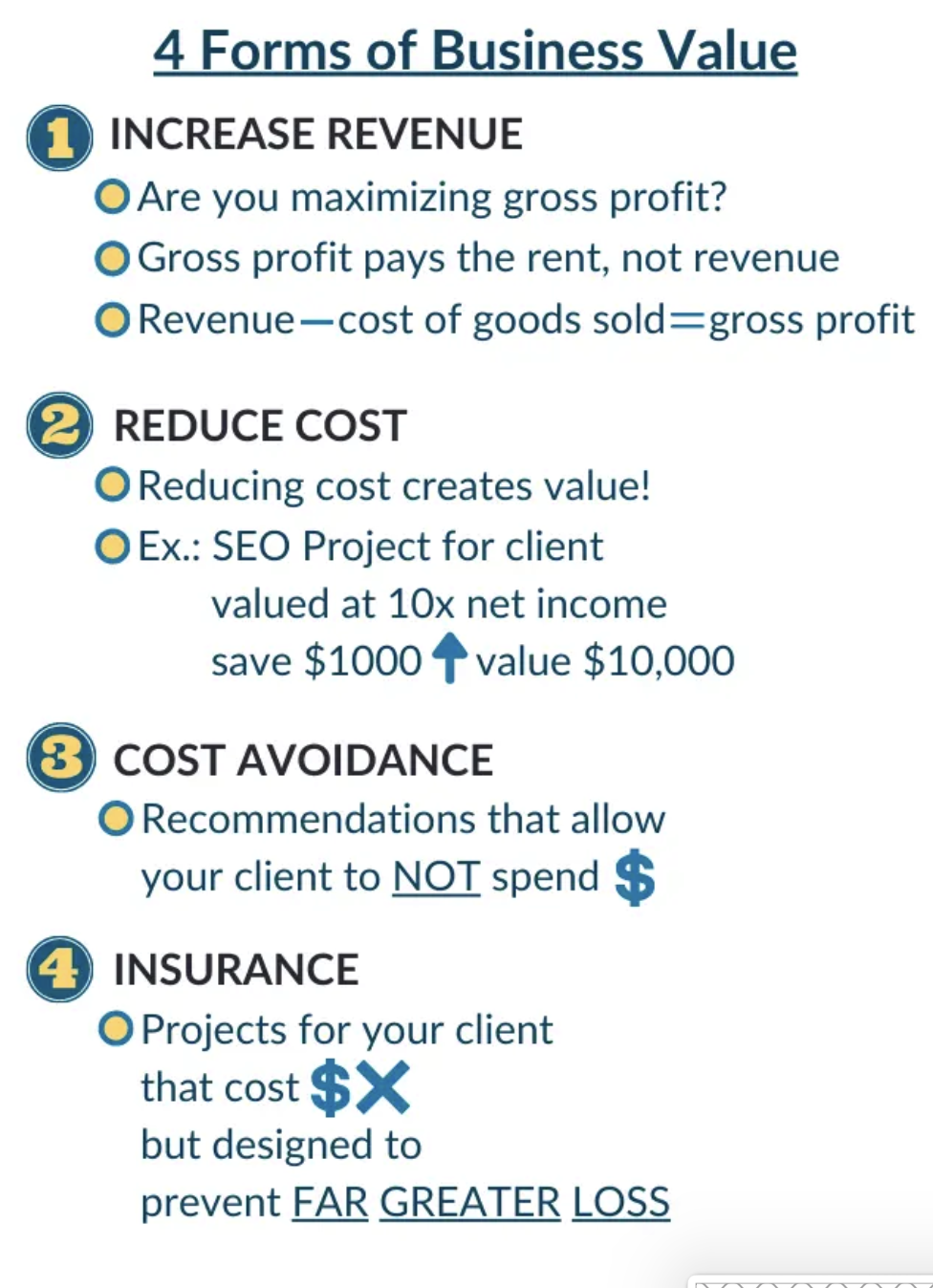
That gets us to the four types of business value. So there are at least four.
- Increase revenue
- Are you maximising gross profit?
- Gross profit pays the rent, not revenue
- Revenue - cost of goods sold = profit
- Reduce Cost
- Reducing costs creates value!
- Example: SEO project for client valued at 10x net income, by saving $1k increases value by $10k
- Cost Avoidance
- Recommendations that allow your client not to spend money in the future
- Example: Using SEO knowledge to reduce tech debt and create more financially sustainable structure
- Insurance Value
- Projects for your clients that cost $x but are designed to prevent far greater loss
There's a fifth that I'll touch on briefly in a moment. But for the most part we can increase revenue, but ah, not so fast, gross profit. We can reduce cost. We can do something which is called cost avoidance. We can help our clients avoid cost. Then there's insurance value.
In my time at Seer, I've found us in projects that do one or more of these things, oftentimes without our team even realizing that they're creating this additional value. Now down here there's a little bit of an economics lesson, and this is called a utility curve. I'll get to why that's important in a second, and it'll help me explain why some of these things over here create value, how that actually happens.
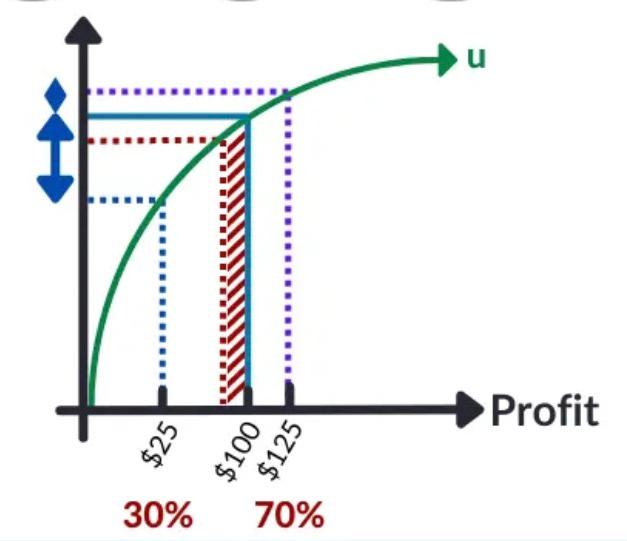
Increasing revenue
Let's go back to increasing revenue, gross profit. So questions you can think about if you're focused here. Are you generating more profits for your client, or are you stopping at revenue?
I suggest we take a pause to really consider that. We've had situations where we might be generating more revenue for the client, but it turns out that the unit economics are such that at the gross profit level, the client might be losing money on everything we help the client sell. So even though everything over here has been geared towards up and to the right, better rankings, more traffic, higher engagement, more conversions, more revenue, all for naught if the thing we're selling has crazy shipping costs and the shipping costs are turning out to be a loser for the client.
This person might not be aware of that, but these people might. So you kind of see how understanding a little bit more of what happens at this level can help you put what you're doing here in greater context. So when I talk about gross profit, gross profit is basically revenue minus cost of goods sold or COGS generally speaking.
That's gross profit. The thing to bear in mind is that gross profit pays the rent, not revenue. You still have to pay for the cost of the thing that your client produces, and what's left over is what actually covers other expenses. We don't often think that way when we're doing SEO projects, and we're strictly focused on revenue.
Might want to think about gross profit or asking these kinds of questions, which is a signal. So that's the other thing about this. We don't have to become experts necessarily in our clients' businesses, but maybe asking better questions once we're in the meetings up talking about this stuff with these people that signals, "Hey, I know your business. I understand that there's more going on than just the SEO."
Cost reducing
Next is reducing cost. So reducing cost increases value, and that's where the utility curve comes in. It's a very simple concept and well-proven that the gain that one might get from a little bit more of something doesn't feel as good as losing a bunch really stinks.
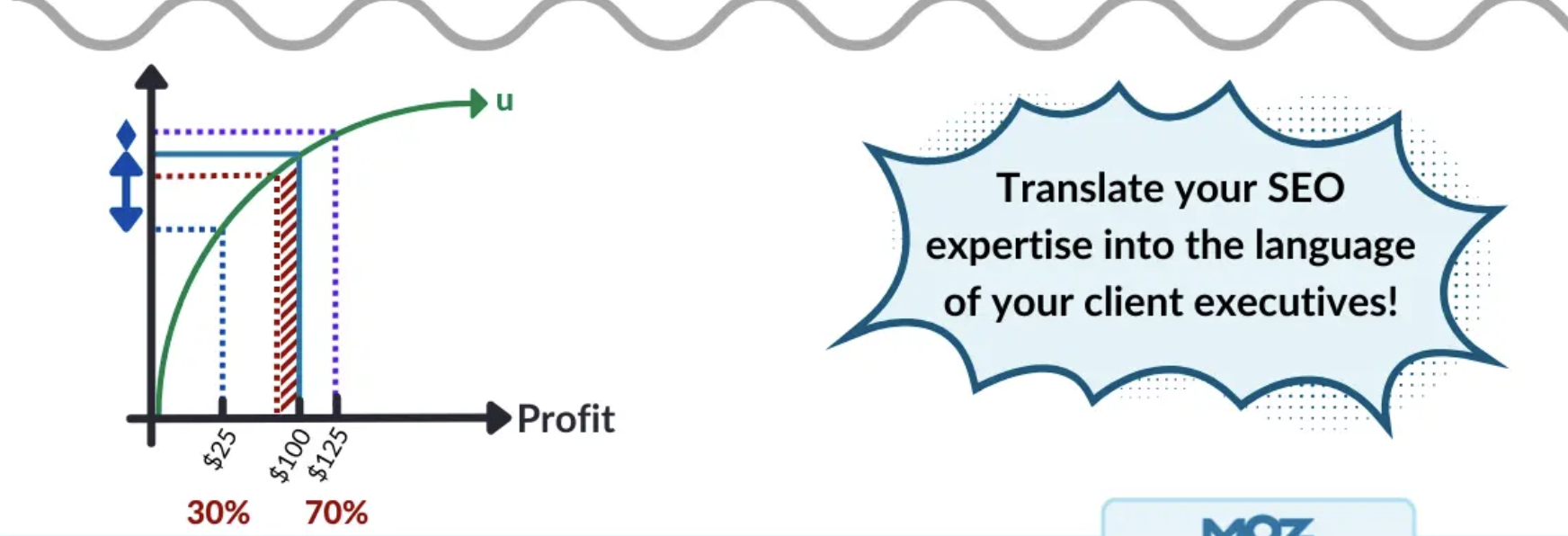
So that's called loss aversion. So it works in such a way that adding a little bit more profit makes the client better off. Losing profit can hurt a lot. It's a concept that's going to be helpful and let me sort of step you through it in more detail.
So if you reduce cost and we make recommendations to our clients all the time. We don't always realize that those clients necessarily are saving more money from what we do. It's a useful thing, but all of our charts over here have to go up and to the right. We don't necessarily report on how much money I saved you.
We tend to report on how much revenue I generated. But there are sometimes conversations and recommendations that we can have with the clients that could be either new tools they can procure, or maybe there are things that we can be doing for a client, like content creation, that we can do at a lower cost than the client can do at another agency or even with an internal team.
So I gave a quick example here. So imagine you have a client that happens to be valued at 10 times their net income let's say. If we save that client $1,000, that might be, "Oh, great." One little thing I threw into an update at the end of the month as I'm talking about the revenue I'm generating, but the CFO will immediately recognize, "Oh, I'm valued at 10x. They just increased the value of my business by $10,000."
That might not be something that ever enters into the conversation if we're just thinking about the SEO work that we do, but we just created a lot of value for somebody.
Cost Avoidance
The other one is cost avoidance. This is a tricky one. But this basically means what are the recommendations we can make for a client that will allow them to not spend money on something in the future.
Quick example, some time ago we had a client that was faced with a choice. They were running a m-Dot site and their dot-com for desktop, and they maintained them both. But it came time to upgrade their CMS, and they had two options. One, they could upgrade both systems and continue to maintain a separate mobile and desktop experience.
But if they did that, they would have to hire additional developers and another agency to maintain both sites. The other option was to have a fully fluid site, a dynamic site that allowed them to avoid all that cost. We helped them understand which might be better for their SEO, but using this framework, also which might be better from an expense standpoint.
They chose to do option number two. They avoided all that extra expense, and that was cost avoidance. The reason why that's tricky is because it's hard to prove the counterfactual. We don't know what they literally would have spent had they done both sites, but we know what they budgeted and we said, "Hey, by following this other recommendation, you avoided having to pay this."
That's actually budget savings. Budget savings means, back to our utility curve, that their profit went up, made them better off, possibly also allowed them to increase the value of their business.
Insurance value
Lastly, there's insurance, and this is one that is not terribly intuitive until you think about it.
So imagine you have a client that is contemplating a site relaunch. They have an internal SEO team, and they're very confident in their abilities, but they might not have a lot of experience or maybe not as much experience as you in a migration or the site relaunch. So your client might engage you to have a short-term project to help augment the capabilities of their internal team, maybe check on things, maybe be there the night of the conversion, and those sorts of things.
Now it's an additional expense. So this person here might say, "Oh, I don't know if I can get another agency through procurement because we already have an internal team helping us on our migration." But the CFO might say, "Oh no, this is insurance. I will gladly pay an insurance premium to avoid a massive loss if this website is generating a lot of revenue or gross profit for me," because they do that all the time. If you think about all the insurance that a business might spend money on, explaining that SEO project or that technical SEO support project in the context of insurance might make a ton of sense to them if you've been invited to that table and you can explain what you do within that context.
So here, I won't get into the details, but what I will show you is that you will gladly pay this little bit of premium, in other words, your contract to support their internal team. The client might gladly pay that to avoid the possibility of a large loss. So you just have to convince the client that your presence will actually prevent that loss.
That's insurance and that's value for your client. So that's about it. To recap, think about the work that you do and how to translate that into the business challenges that these folks are grappling with. So they might just pop into your QBR or pop into your monthly meeting. They might not understand Penguin and BERT and ChatGPT or any of that stuff, but they do understand what's going to make me more money, gross profit, what's going to save me money, what's going to help me avoid some nasty costs I would really rather not pay, and what's going to insure me.
How are you going to watch my back and prevent some larger loss later? So basically back to where I started, how do you translate your SEO expertise into the language of your client executives? Thank you very much.
Learn more about creating value for clients here.



![How to Create an SEO Forecast [Free Template Included] — Whiteboard Friday](https://moz.rankious.com/_moz/images/blog/banners/WBF-SEOForecasting-Blog_Header.png?w=580&h=196&auto=compress%2Cformat&fit=crop&dm=1694010279&s=1a76a7c52ec3cdfe4e321bf5dae6894e)